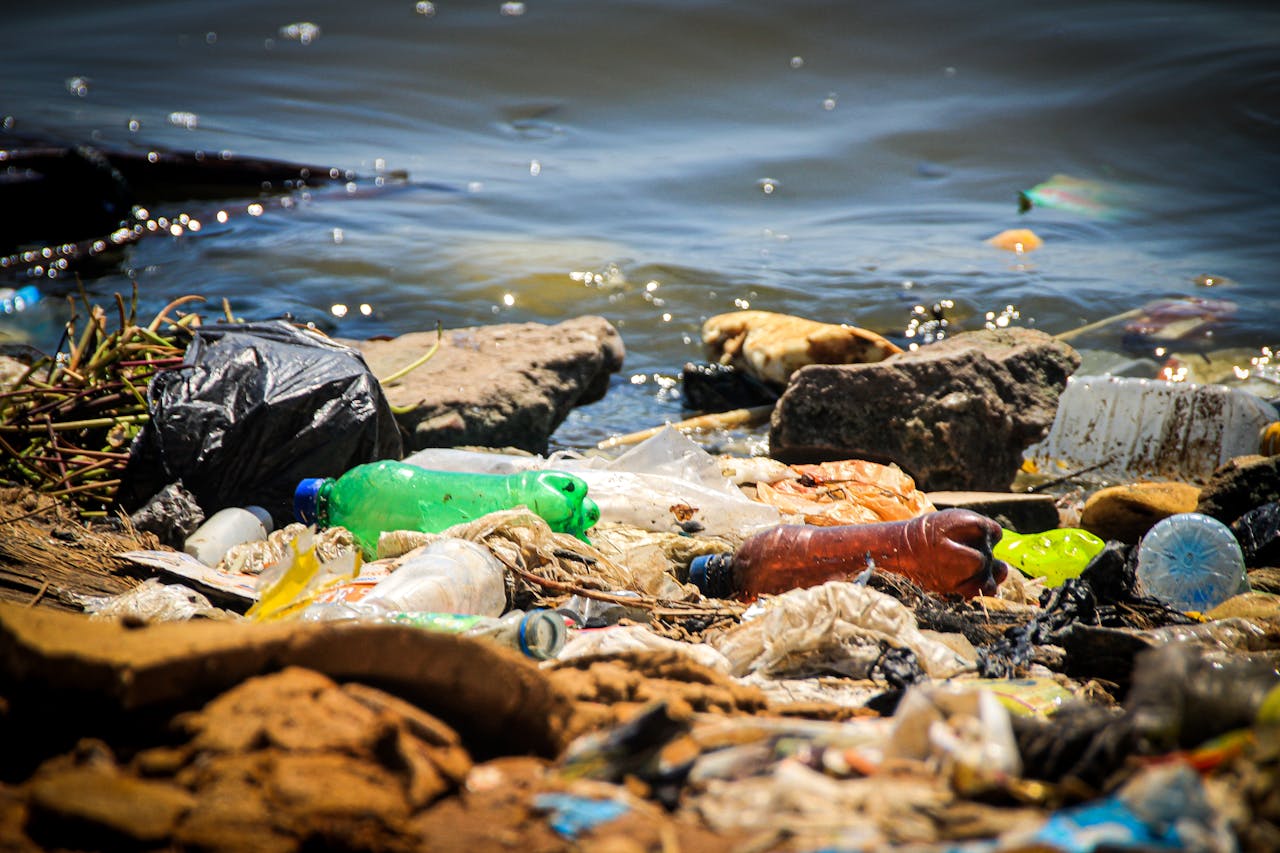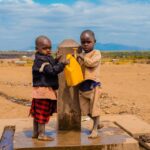The Link Between Poor Sanitation and Water Contamination in Benin Republic

Clean water and proper sanitation are basic needs for good health, yet they remain out of reach for many people in Benin Republic. While efforts have been made to improve water access, poor sanitation continues to contaminate water sources, making clean drinking water a challenge for millions.
Imagine collecting water from a well or tap, thinking it’s safe, only to find out later that it has been contaminated by human waste or garbage. This is a daily reality for many communities in Benin. Poor sanitation, including open defecation, overflowing sewage, and improper waste disposal, allows harmful bacteria and chemicals to enter water supplies, leading to widespread illnesses.
In this article, we’ll explore how poor sanitation affects water quality, the health risks involved, and what’s being done to fix the problem.
Understanding Sanitation in Benin Republic
Sanitation refers to how human waste (urine and feces), garbage, and wastewater are managed in a community. Proper sanitation means having safe toilets, proper drainage systems, and a way to dispose of waste without harming people or the environment.
In Benin, sanitation conditions vary greatly between urban and rural areas:
- In cities, some households have toilets connected to septic tanks. But many areas still lack proper drainage, leading to sewage spills especially during the rainy season.
- In rural areas, many people still practice open defecation because they have no access to toilets. Some use simple pit latrines, but these are often poorly built and can overflow, polluting nearby water sources.
- Garbage disposal is another challenge. In some communities, waste is dumped in open spaces or rivers, contaminating drinking water sources.
Without proper sanitation, human waste and garbage mix with drinking water, increasing the risk of disease. This is why sanitation improvements are crucial for ensuring safe water in Benin.
How Poor Sanitation Leads to Water Contamination
Poor sanitation is one of the main reasons why many people in Benin lack access to clean drinking water. But how exactly does this happen?
- Open defecation near water sources: When people relieve themselves outdoors, especially near rivers, lakes, or wells, rain can wash the waste into these water sources, making the water unsafe to drink.
- Broken sewage systems: In cities, where sewage pipes exist, they are often old or damaged. When these pipes leak or overflow, untreated waste seeps into underground water supplies or mixes with tap water.
- Garbage pollution: People often dispose of trash in rivers and gutters. Over time, plastic, chemicals, and rotting waste build up, polluting the water that people rely on for drinking and cooking.
- Flooding and heavy rains: When it rains heavily, water picks up waste from latrines, streets, and garbage dumps, carrying it into wells, boreholes, and even household water storage tanks.
The result? People unknowingly drink and cook with contaminated water, putting their health at risk.
Common Waterborne Diseases in Benin Linked to Poor Sanitation
When water is contaminated with human waste and garbage, it becomes a breeding ground for bacteria, viruses, and parasites that cause diseases. Some of the most common illnesses in Benin linked to unsafe water include:
- Cholera: A deadly disease that causes severe diarrhea and dehydration. Outbreaks occur often in Benin, especially during the rainy season when floods spread contaminated water.
- Typhoid fever: Caused by bacteria in dirty water, typhoid leads to high fever, stomach pain, and weakness. Without treatment, it can be life-threatening.
- Diarrhea: Many children in Benin suffer from frequent diarrhea due to drinking unsafe water. In severe cases, it can lead to dehydration and malnutrition.
- Dysentery: A severe form of diarrhea that includes blood and mucus in the stool, caused by bacteria and parasites found in contaminated water.
- Worm infections: Poor sanitation leads to parasitic infections like hookworm and schistosomiasis, which can cause anemia, malnutrition, and organ damage.
These diseases hit the hardest in poor and rural communities, where healthcare access is limited. Children, pregnant women, and the elderly are especially vulnerable.
Impact on Communities and Daily Life
When water is contaminated, the effects go beyond health problems. It affects almost every part of daily life in Benin, especially for families in poor and rural areas.
- Missed school days for children: Many children suffer from diarrhea and other waterborne diseases, forcing them to stay home instead of attending school. In some cases, schools themselves lack clean water and proper toilets, making the problem worse.
- Increased medical costs: Families spend a lot of money on hospital visits, medicine, and treatments for preventable illnesses caused by unsafe water. This puts a financial strain on households that are already struggling.
- Lost productivity for workers: When people get sick, they miss work, which affects their income. Farmers, traders, and laborers who rely on daily earnings suffer the most.
- Burden on women and girls: In many communities, women and girls are responsible for fetching water. When local sources are polluted, they must walk long distances to find clean water, using up time they could have spent on education, work, or caring for their families.
- Food safety risks: Contaminated water is also used to wash vegetables, cook food, and clean kitchen utensils. This increases the spread of bacteria and makes food unsafe to eat.
Government Efforts to Improve Sanitation and Water Quality
The Beninese government has taken several steps to address sanitation and water issues, but challenges remain. Some key initiatives include:
- Expanding clean water access: The government, in partnership with international organizations, has built new wells, boreholes, and water treatment plants in several communities.
- Improving sanitation infrastructure: Some cities have seen upgrades to sewage systems and drainage networks to reduce contamination risks.
- Public awareness campaigns: Programs educate people on the dangers of open defecation and the importance of hygiene, encouraging households to build proper toilets.
- Collaboration with NGOs: Many nonprofit organizations work alongside the government to provide better sanitation facilities and hygiene education in schools and communities.
- Regulations on waste disposal: Efforts have been made to enforce rules on proper garbage collection and management to reduce pollution of water sources.
While these efforts are positive, progress is slow due to financial constraints, rapid population growth, and limited access to remote areas. Many communities still rely on outdated or unsafe water systems.
The Role of NGOs and International Organizations
Several non-governmental organizations (NGOs) and international bodies are actively working to improve water and sanitation in Benin. These groups provide funding, resources, and expertise to fill gaps where the government cannot.
Some of their key contributions include:
- Installing clean water sources: NGOs have built boreholes, wells, and water purification systems in rural and underserved areas.
- Providing sanitation facilities: Many schools and villages have received proper toilets and handwashing stations, reducing the spread of disease.
- Hygiene education programs: NGOs train local communities on best practices for water storage, handwashing, and waste management to prevent contamination.
- Emergency response during disease outbreaks: During cholera outbreaks, international organizations provide emergency water purification tablets, medical aid, and sanitation kits to affected areas.
One of the newer organizations focusing on clean water in West Africa is Aqua Maya, a public charity committed to providing safe drinking water to underserved communities. By working with local leaders and experts, Aqua Maya aims to create long-term solutions that improve health and reduce waterborne diseases.
Despite these efforts, there is still a long way to go. More funding, better policies, and continued community involvement are needed to make lasting improvements.
What Individuals and Communities Can Do to Help
While solving water and sanitation problems requires large-scale efforts, individuals and communities can take small but meaningful actions to protect their water sources and improve hygiene.
Here are some practical steps:
- Boil or purify drinking water: Households can boil water before use or use affordable purification methods, like chlorine tablets or ceramic filters.
- Proper waste disposal: Avoid throwing garbage into rivers, drains, or open spaces. Community clean-up efforts can help keep water sources free from pollution.
- Building and using latrines: Encouraging the use of proper toilets instead of open defecation can significantly reduce contamination risks.
- Teaching children hygiene habits: Schools and families should educate children on the importance of handwashing and using safe water.
- Community-led sanitation projects: Villages and neighborhoods can work together to improve drainage, maintain clean public spaces, and advocate for better sanitation facilities.
- Supporting NGOs and awareness campaigns: Those who can donate or volunteer with organizations working on clean water projects can make a direct impact.
Small changes, when multiplied across communities, can lead to big improvements in sanitation and water quality.
The Long-Term Effects of Unclean Water and Poor Sanitation
If poor sanitation and water contamination continue in Benin, the long-term effects could be devastating. The impact goes beyond immediate health risks and can affect future generations.
- Increased disease burden: Waterborne diseases will continue to spread, leading to more deaths, especially among children. This will put a strain on hospitals and healthcare systems.
- Stunted growth in children: Malnutrition and repeated infections from contaminated water can lead to stunted growth and weakened immune systems, affecting children’s overall development.
- Reduced life expectancy: Continuous exposure to unsafe water and poor hygiene can lead to long-term health complications, decreasing life expectancy.
- Economic losses: Sick workers means lost productivity. Families spending money on medical treatment instead of investing in education or businesses will remain in poverty.
- Environmental damage: Polluted rivers and lakes affect agriculture, fishing, and overall biodiversity, making it harder for communities to thrive.
Without urgent action, the cycle of disease and poverty will continue, making it difficult for Benin to achieve economic and social progress.
Success Stories from Other Countries
Many countries once struggled with similar sanitation and water challenges but have made great improvements through proper planning and community efforts. Here are a few examples:
- Rwanda: By enforcing strict sanitation laws and investing in clean water infrastructure, Rwanda has drastically reduced cases of waterborne diseases. The country also promotes community-led hygiene programs.
- Bangladesh: Once known for high rates of water contamination, Bangladesh made significant progress by providing low-cost water filters and safe sanitation facilities in rural areas.
- Ghana: Through partnerships with international organizations, Ghana has increased access to clean drinking water and improved sanitation, particularly in urban slums.
- Ethiopia: The government and NGOs have worked together to build community-managed clean water projects, ensuring sustainable access to safe drinking water.
These success stories show that with the right policies, funding, and community involvement, Benin can also achieve better sanitation and water quality.
What Needs to Be Done Moving Forward
To break the cycle of water contamination and poor sanitation, Benin needs stronger efforts from the government, communities, and international partners. Here’s what needs to be done:
- Increase investment in clean water projects: More boreholes, wells, and water treatment plants should be built in underserved areas.
- Improve sanitation infrastructure: Expanding sewage systems and enforcing proper waste management can reduce contamination risks.
- Strengthen hygiene education: Schools, hospitals, and community centers should teach proper hygiene practices to prevent disease outbreaks.
- Encourage public-private partnerships: Governments, businesses, and NGOs should collaborate to fund long-term solutions for clean water and sanitation.
- Empower communities: Local leaders and residents must be actively involved in maintaining clean water sources and proper waste disposal.
- Support NGOs and awareness campaigns: Donations, volunteering, and advocacy can help organizations like Aqua Maya continue their work in providing safe water to those in need.
Clean water and proper sanitation are not luxuries – they are basic human rights. By taking action now, Benin can protect the health and future of its people.
Conclusion
The link between poor sanitation and water contamination in Benin is clear – when sanitation systems fail, water sources become unsafe, leading to widespread disease, economic hardship, and environmental damage. While the government and various organizations have made efforts to improve access to clean water and sanitation, challenges still remain.
However, there is hope. Other countries have successfully tackled similar issues, proving that with the right investments, policies, and community involvement, Benin can make significant progress. The solution lies in a collective effort – stronger infrastructure, better hygiene education, and sustainable water management.
For this to happen, everyone has a role to play. Governments must prioritize clean water projects, NGOs like Aqua Maya need continued support, and communities must be actively involved in maintaining hygiene and protecting their water sources.
Safe water should not be a privilege – it is a necessity for life and development. The more action taken today, the closer Benin gets to a future where every person, regardless of where they live, has access to clean and safe water.
Sources
1. https://pmc.ncbi.nlm.nih.gov/articles/PMC10510876/
2. https://pmc.ncbi.nlm.nih.gov/articles/PMC11765368/
3. https://www.unsdsn.org/news/benin-aims-to-increase-drinking-water-service-coverage-to-100-by-2026/






